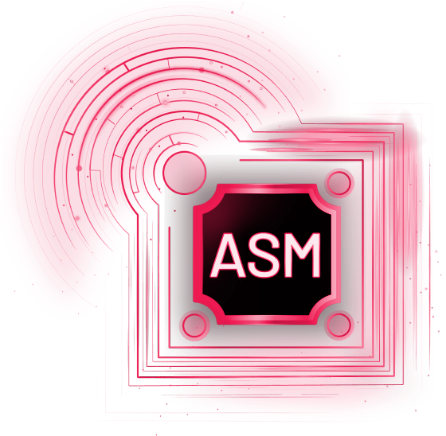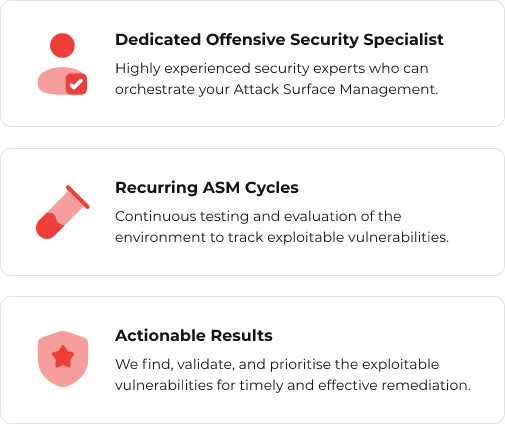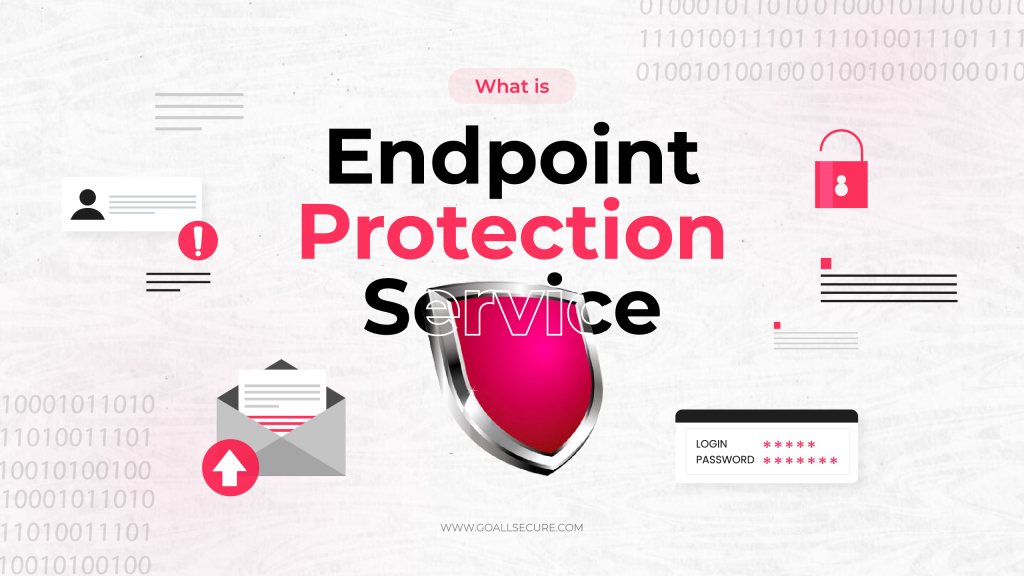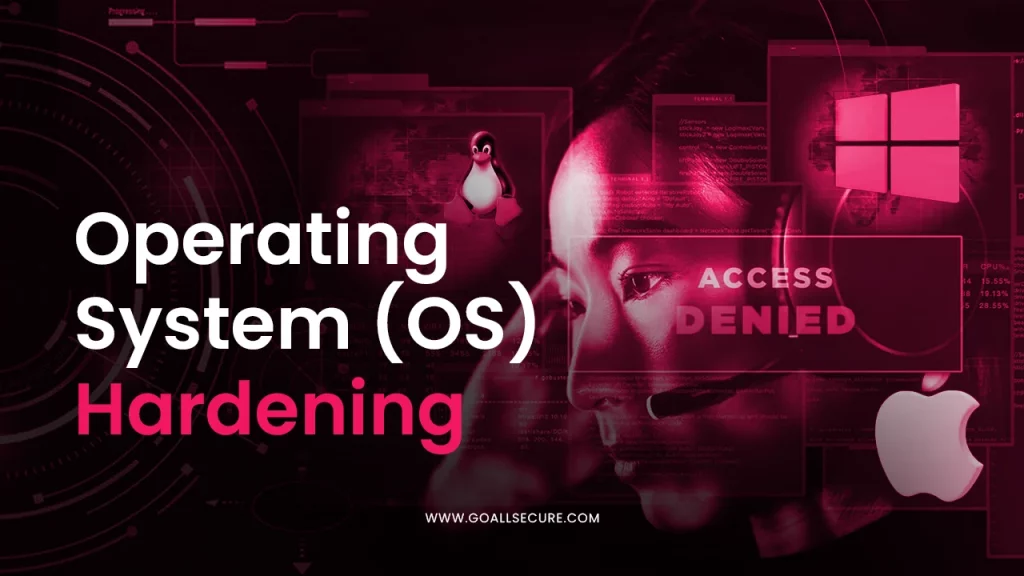Attack Surface
Management
Gain Visibility into Your Network and Better Monitor
Threats
Attack surface management (ASM) is the process of keeping track of an always-shifting network environment. It is a cycle of constant identification, evaluation, correction, and monitoring of the cybersecurity flaws and potential attack vectors that make up an organisation’s attack surface. ASM enables security teams to patch holes and counter new threats. What exactly is an attack surface, then? Your whole network—both on- and off-premises—as well as any potential weak spots where intruders could access it.
ASM is conducted purely from a hacker’s perspective, not the defender’s. Based on the chances a hostile attacker would have, it finds targets and evaluates risks. ASM relies on many of the same techniques and resources that hackers utilise. Thus it needs specialists who are aware of the tactics used by cybercriminals and are adept at imitating their actions.

Reduce Security Risk with Our Attack Surface Management Experts
How Does Attack Surface Management Work?
Asset discovery, classification and prioritisation, remediation, and monitoring are the four fundamental activities of ASM. These procedures are ongoing. The objective is to speed up the reaction to the vulnerabilities and threats that pose the most danger to the organisation and to guarantee that the security team always has a complete and up-to-date inventory of exposed assets.
Step 1
Discovery
Asset discovery is continuously searching for and locating internet-facing hardware, software, and cloud assets that could serve as entry points for hackers or cybercriminals. These resources may includes
- Known assets
- Unknown assets
- Subsidiary assets
- Third-party or vendor assets
- Rogue assets
Step 2
Analysis & Prioritisation
Assets are first identified, then categorised, examined for vulnerabilities, and ranked according to the likelihood that hackers will target them. They are examined for potential vulnerabilities, the reasons behind such vulnerabilities, and the types of attacks hackers might launch using those vulnerabilities. Next comes prioritisation, which is a process of risk analysis. A security rating or risk score is assigned to each vulnerability. The vulnerabilities given the highest priority for repair are sent for remediation.
Step 3
Remediation
Once a network, system, or application’s vulnerabilities have been found, they must be corrected. Vulnerabilities are always fixed in order of importance. Remedial action aims at completely eradicating the threat of potential cyberattacks or data breaches that might take advantage of these vulnerabilities.
It could be done by adopting the proper security measures for the asset in question. Or by bringing previously unknown assets under control. Even implementing cross-asset solutions for mitigating vulnerabilities can be part of remediation.
Step 4
Monitoring
Since security threats in the organisation’s attack surface alter as new assets are deployed or current assets are moved, continuous monitoring and scanning for vulnerabilities is a must. ASM can identify and evaluate new vulnerabilities and attack vectors in real-time thanks to continuous monitoring, and it can also notify security teams of any newly discovered vulnerabilities that require rapid attention.
Secure Every Layer of Your Modern Attack Surface
Why GoAllSecure for Attack Surface Management?
Your attack surface is changing, and it's getting harder to get your arms around it. GoAllSecure can assist because it has one of the best and most dedicated attack and pen-testing teams in the world. Differential penetration is offered by our Attack Surface Management (ASM) programme which establishes a complete, comprehensive baseline before identifying changes over time and evaluates an altered or new attack surface.
With our regular testing schedule, each testing cycle gives insight into the fresh risks brought up by fresh systems and modifications to services or configurations made between cycles.


















 TRAVEL & HOSPITALITY
TRAVEL & HOSPITALITY HEALTHCARE
HEALTHCARE RETAILS & ECOMMERCE
RETAILS & ECOMMERCE BANKING & FINANCIAL
BANKING & FINANCIAL AutoMobile
AutoMobile MANUFACTURING
MANUFACTURING FOOD
FOOD EDUCATION
EDUCATION


